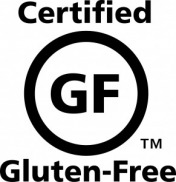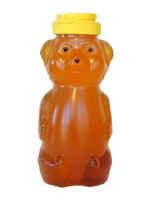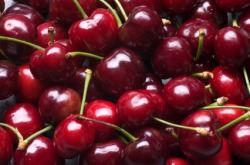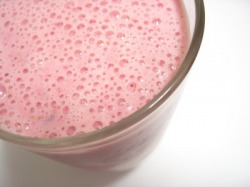health and wellness | GLUTEN INTOLERANCE
Welcome to Week 3 Pil-ogies. You guys are doing so great, and you should congratulate yourselves for your hard work! This week we're talking about gluten intolerance, or celiac disease. Some of you may already know that I have celiac disease. I was diagnosed last year and have followed a somewhat gluten-free diet ever since. However, after doing a little more research for this email - I am staying away from it completely!!!! I had no idea how destructive it can be for those who are intolerant of it. I have noticed a huge shift in my digestion, energy, mood and weight since I stopped eating gluten. As you'll soon read, gluten intolerance is inherited and a few women in my family have it as well. Both Hannah and I hope that this will help you and your families identify gluten intolerance and navigate the gluten-free world. Best, Ishbel
pil-oga-robic | MIND - Gluten intolerance, or celiac disease, is an inherited autoimmune disease which causes severe inflammation of the small intestines. Apparently saying you are "allergic to gluten" is incorrect because it is not an allergy but an autoimmune disease. - Gluten is found in wheat, barely, rye and possibly oats. - About 1 in 133 Americans have the condition.
- For unknown reasons, the disease sometimes emerges after some sort of trauma is experienced, such as an infection, an injury, pregnancy, surgery or intense emotional strain or stress.
- Gluten can be found in just about everything from pasta to salad dressing to alcohol and cheese. Even some seasonings like cinnamon can have gluten in them. Check your labels!
pil-oga-robic | BODY - Gluten intolerance is linked to many different health problems: malnutrition, cancer, osteoperosis, infertility, thyroid disease, type 1 diabetes, ulcers. If you have one of the before-mentioned conditions, be sure your doctor has tested you for gluten intolerance because it may be making a bad situation even worse! - An individual may accidentally eat gluten after beginning a gluten-free diet without noticing any symptoms. However, this does not mean that no harm has been done. Any gluten ingested by a gluten-intolerant person will damage the small intestine. It is very dangerous to practice an on-and-off gluten diet. Strict adherence to a gluten-free diet is essential. - Common symptoms include: abnormal bloating and pain, diarrhea, constipation, anemia, bone pain/weakness/osteoporosis, fluid retention, mouth sores, weight gain or loss, missed menstrual periods, infertility/miscarriages, behavioral changes, exhaustion, mental lethargy
- Ask your doctor for a blood or saliva test to check for gluten intolerance.
pil-oga-robic | WELLNESS You won't starve to death if you're allergic to gluten! - Foods such as meats, fish, poultry, (most) dairy products, unprocessed fruits and vegetables, beans, rice and potatoes are all safe.
- Gluten-free flours, such as those made from rice, soy, corn or potato, are available as alternatives and are great for baking.
- Foods made from cornmeal are safe.
- Gluten-free cookies, cereals, breads and pastas. (New Seasons has an entire isle of gluten free stuff!) - Check out other blog posts for some delicious gluten free recipes - you'll be amazed at how easy it can be! BOOKS | For more information check out these reads!!! -Living with Celiac Disease, by Sue Hassett - Gluten- Free Quick & Easy: From Prep to Plate Without the Fuss- 200+ Recipes,
by Carol Fenster
Hello Pil-ogies!
Welcome to another fun filled week of Pil-oga-robics. Can you believe that it is already our second training week in August?! Time just flies on by when you are having this much balanced butt-kicking fun. Our seriously silly theme this week is LAUGHTER. Turns out there is alot of positive health benifits from just getting some good giggle time in your day. So laugh it up...
pil-oga-robic | MIND "What soap is to the body, laughter is to the soul." Yiddish Proverb -Emotional responses appear to be confined to specific areas of the brain, while laughter seems to be produced via a circuit that runs through many regions of the brain. Thanks to How Stuff Works.
-Humor can help us to view life in a more light-hearted manner, thus reducing our stress. 'Stress Without Distress' by Hans Seyle.
-Positive emotions can create neurochemical changes that will buffer the immunosuppressive effects of stress.
-Laughter is contagious - share it with others and watch everyone's perspective change.
-With a lighthearted attitude, events that would normally be annoying become amusing; big hassles become humorously absurd; major stressors become really great stories waiting to be told.pil-oga-robic | BODY "Laughter is inner jogging." Norman Cousins - Michael Miller, M.D. of the University of Maryland did a study on the correlation between laughter and the heart: "We don't know yet why laughing protects the heart, but we know that mental stress is associated with impairment of the endothelium, the protective barrier lining our blood vessels. This can cause a series of inflammatory reactions that lead to fat and cholesterol build-up in the coronary arteries and ultimately to a heart attack...people with heart disease responded less humorously to everyday life situations. They generally laughed less, even in positive situations, and they displayed more anger and hostility."
- Laughter has been found to strengthen the immune system, reduce food cravings and increase your threshold for pain.
-And...It's a great ab workout!!!!
pil-oga-robic | WELLNESS "At the height of laughter, the universe is flung into a kaleidoscope of new possibilities." Jean Houston The Secret Diary of a Cat: DAY 752 - My captors continue to taunt me with bizarre little dangling objects. They dine lavishly on fresh meat, while I am forced to eat dry cereal. The only thing that keeps me going is the hope of escape, and the mild satisfaction I get from shredding on the occasional piece of furniture. Tomorrow I may eat another houseplant and cough it up on the carpeting.
DAY 761 - Today my attempt to kill my captors by weaving around their feet while they were walking almost succeeded, must try this at the top of the stairs. In an attempt to disgust and repulse these vile oppressors, I once again induced myself to vomit on their favorite chair... must try this on their bed (again).
DAY 765 - Decapitated a mouse and brought them the headless body, in an attempt to make them aware of what I am capable of, and to try to strike fear into their hearts.Here are a few videos to make you chuckle:-) laughing baby | http://www.youtube.com/watch?v=M0K7l6IGM0w&NR=1&feature=fvwp
Jim Gaffigan's hot pocket stand up | http://www.youtube.com/watch?v=J9c9lAfXQHs
Walk it out | http://www.youtube.com/watch?v=KU3N5c2Kxnw Have a hilarious weekend! Hannah + Ishbel
This week our theme is about most of our Achilles heal: a sweet tooth for SUGAR. This weeks post should give you some good info and some great alternatives to sugar. I hope your week is sprinkled with Stevia and has a cherry on top:-)
pil-oga-robic | MIND We've focused on two studies, one by Columbia University which shows blood sugar regulation affects memory and is improved with exercise, and a second study by Princeton University which shows that rats binging on sugar are very much like drug addicts when they're forced to stop eating it.
Columbia University Study
-Glucose regulation is improved with physical activity.
-There is a correlation between elevated blood glucose levels and reduced blood flow to the brain.
-Studies have shown that physical activity reduces the risk of cognitive decline and improves glucose regulation.
"Blood Sugar Control Linked to Memory Decline, Study Says" NY Times The study, by researchers at Columbia University Medical Center and funded in part by the National Institute on Aging, was published in the December issue of Annals of Neurology.
Princeton University Study: Denied sugar, binging rats suffered withdrawal.
Hoebel and colleagues in his lab started rats on a pattern of binging by withholding food for 12 hours when the rats were sleeping and through breakfast time, then giving them nutritionally balanced food plus sugar water. The animals gradually increased their daily sugar intake until it doubled, consuming most of it in the first hour it was available.
When the researchers suddenly removed the sugar portion of the rats' diet, the animals exhibited teeth chattering, a common sign of withdrawal. For some animals, the researchers removed the sugar and also administered a dose of a drug that blocks the opioid receptors in the brain. In addition to teeth chattering, those animals showed anxiety and a reversal in the usual balance of neurochemicals in the brain's motivation system. (We do not support animal testing) Princeton University: Sugar on the brain: Study shows sugar dependence in rats
pil-oga-robic | BODY What happens when you eat a refined carbohydrate like sugar?
-Your body must borrow vital nutrients from healthy cells to metabolize the incomplete food.
-Refined sugar contains no fiber, no minerals, no proteins, no fats, no enzymes, only empty calories.
-Calcium, sodium, potassium and magnesium are taken from various parts of the body to make use of the sugar.
-Many times, so much calcium is used to neutralize the effects of sugar that the bones become osteoporotic due to the withdrawn calcium.
pil-oga-robic | WELLNESS Here are some healthy and sweet alternatives to sugar! Throw out the white stuff!!!!
-Cook with Agave Syrup-Steviav (neither affect blood sugar levels)
-Honey
-Molasses
See our next BLOG POST for some awesome sugar free dessert recipes.
-Banana cookies
-Raw Candy
-Agave and Honey Oatmeal Cookies with chocolate chips / raisins
-The Amazing Black Bean Brownies
-Yogurt and berry surprise
Never underestimate the importance of a good nights rest! So take care of yourself and make sure you take time or a few extra steps to get to get that good nights rest whenever you can. This post is making you very sleepy...zzz
pil-oga-robic | MIND
- Rapid-eye-movement (REM) sleep is characterized by a period of intense brain activity and dreams.
- The brain in REM sleep can be even more active than when we are awake.
- The reasons why we dream and the meaning of our dreams, despite scientific investigations, still largely remain a mystery.
- Given that a single sleepless night can cause people to be irritable and moody the following day, it is conceivable that chronic insufficient sleep may lead to long-term mood disorders. Chronic sleep issues have been correlated with depression, anxiety, and mental distress.
pil-oga-robic | BODY
- Digestion, cell repair, and growth are often greatest during sleep, suggesting that cell repair and growth may be an important function of sleep.
- Lack of sleep disrupts the hormones that help to control appetite, metabolism and blood sugar levels.
- Poor sleep may result in food cravings even after you're full and may increase your craving for sugar.
pil-oga-robic | WELLNESS
TIPS to get a better night's rest:
#1 Avoid Caffeine, Alcohol, Nicotine, and Other Chemicals that Interfere with Sleep
#2 Turn Your Bedroom into a Sleep-Inducing Environment: bats sleep in caves for a reason!
#3 Establish a Soothing Pre-Sleep Routine: Ease the transition from wake time to sleep
#4 Keep Your Internal Clock Set with a Consistent Sleep Schedule
#5 Nap Early—Or Not at All
#6 Lighten Up on Evening Meals: Finish dinner several hours before bedtime and avoid foods that cause indigestion.
Our theme this week is KNEE HEALTH. Enjoy!
pil-oga-robic | BODY
WEAK IN THE KNEES
The knee marks the meeting place of three bones: the shinbone (tibia), the thighbone (femur), and the kneecap (patella). Unfortunately, the knee's mechanics are better suited to chasing animals for dinner than to sliding into second base, says Stephen Messier, professor of health and exercise science at Wake Forest University.
Every year, nearly 11 million Americans complain to doctors about knee pain. Orthopedic surgeons operate more often on the knees than on any other body part. The findings of a study published in the Annals of Internal Medicine highlights the importance of evenly building the leg muscles to keep the knee joint properly aligned - a task for which yoga and Pilates are perfect.
William Roberts, M.D., president-elect of the American College of Sports Medicine says, "Tension in the muscle is fine. Sensation directly above the kneecap is not a problem, but if the tension is on the sides of the knees, I'd back off."
pil-oga-robic | MIND
6 Ways to Protect Your Knees
1. Avoid Hyperextension: When joints are overly mobile and flex too far back, they're hyperextended. In the knees, hyperextension often occurs in poses in which the legs are straightened.
2. Start with your feet. Proper alignment through the feet is the key to building strength evenly in the ligaments on both sides of the knee. Separate your toes and press actively through the four corners of your feet in every pose, even inversions. If your feet are out of alignment, your knees are going to suffer.
3. Keep your knees in line. In positions in which you bend your knee,first align your bent knee over your ankle, then draw your kneecap in line with your second toe. Lift up through your arches.
4. Tune in to subtle signals. If you feel achiness when you come out of a bent-knee pose, you may have worked too hard.
5. Build strength by balancing. Very dynamic balancing protects the knee against future injury by training the functional alignment, not just working the muscle.
6. Warm up with hip openers. If your big joints aren't open, your small joints will always take the stress.
Pil-oga-robic | WELLNESS
Treat those Knees! Here are some tips to reduce knee inflammation:
-Icing the knees after a workout in an ice bath/ or with ice pack. Kneel or sit in tub full of cold water and a few scoops of ice (10 mins), OR for less sever pain use ice pack (20 mins).
-Increase your tumeric intake. View post on blog for a few recipes from Vegetarian Times that include turmeric: Mellow Yellow Rice Noodles w/ Roasted Peanuts and Potato and Baby Spinace Masala
-Eat Cherries or take a cherry supplement. They are rich in antioxidants and decrease inflammation and relieve syptoms of Osteoarthritis. Some studies show it to be as effective as aspirin at revealing pain.
(Thank you Yoga Journal for all of the great information!)
Take special care of those neat-o knees this week!
Hannah + Ishbel
tips | BEAT THE HEAT DURING A WORKOUT
- Drink plenty of liquids, even if you're not thirsty. Sports drinks including electrolytes help to replenish what we sweat out.
- Bring an extra water bottle to practice. Regularly pouring a little water on your head/body during your run can help to increase the evaporation-cooling effect.
- Dress in light-weight, light-colored, loose-fitting clothing. Try to avoid wearing cotton, wear clothing made of lightweight technical fabrics designed to whisk away moisture keeping you cooler and dryer. A water-logged cotton T-shirt can actually slow down the evaporation-cooling process causing you to overheat.
- Wear a hat or visor to block the sun's rays, shade eyes, and keep sweat out of eyes.
- Eat light. Avoid hot, heavy meals and opt for foods high in water content: fruits, salads and soups.
- Take cool baths and showers before or/and after a workout. Water conducts heat away from the body, bathing in tepid water is a good cooling technique.
Cut the Fat and Cut your Cholesterol
Ounce for ounce, fat contains over twice the calories that protein or carbohydrates do. Eating too much fat, no matter what kind, can make you put on excess weight. Eating too much fat can also increase your risk of certain types of cancer, such as breast or colon cancer.
DON'T feel you have to give up any favorite food completely when making dietary changes. If you really enjoy certain high-fat foods then DO:
- Eat them in smaller portions (example, one cookie instead of three).
- Find a version of the food that is lower in fat (example, ice milk instead of ice cream).
- Find a substitute for the food that you like almost as well (example, popcorn instead of peanuts).
To limit total fat intake:
- Broil, bake, boil, or roast foods rather than fry.
- Use non-stick pans or coat pans with a thin layer of non-stick spray.
- Add less fat to food during both cooking and eating. Some examples include using jam instead of margarine on toast, a non-fat or low-fat salad dressing instead of a high-fat dressing, lemon juice instead of butter on vegetables, or salsa instead of sour cream on baked potatoes.
- Experiment with butter substitutes, spices, and other flavorings as alternative to fat.
- Look for low-fat alternatives to foods, such as a bagel instead of a doughnut, pretzels instead of potato chips, or a round steak instead of a t-bone steak
- Try new fat-free products like yogurt, cookies, or crackers.
- Read labels, which offer excellent information to help you compare fat content of prepared foods.
Reducing Saturated Fat And Cholesterol:
Here are some simple changes that will help you greatly reduce saturated fat and cholesterol in your diet.
Egg yolks:
- Eat no more than three eggs yolks weekly.
- Eat as many egg whites as you like - they contain no cholesterol.
Meats:
- Buy lean meats such as fish, poultry, veal cutlet, pork tenderloin, or flank steak.
- Trim as much fat off meat as possible.
- Broil, barbecue, or roast meat on a rack rather than fry them. This allows some of the fat to escape during cooking.
- Limit the amount of hamburger you eat, and buy the leanest type available.
- Replace high-fat prepared meats like sausage and luncheon meats with lower-fat meats like lean turkey or chicken.
- Remove the skin from chicken or turkey before you cook or eat it.
- Try to eat fish twice weekly. Fish contains a type of fat called omega-3 fat that may help prevent heart disease.
Dairy products:
- Use margarine instead of butter, choosing a margarine that has a liquid oil rather than a hydrogenated oil listed as the first ingredient.
- Choose a lower-fat milk. If you use whole milk, switch to 2%. If you use 2%, switch to 1% or skim milk. (All types of milks have the same amount of calcium and other vitamins and minerals.)
- Use non-fat or low-fat yogurt.
- Use plain non-fat yogurt instead of sour cream.
- Cut down on the amount of regular cheeses you eat. Look for lower-fat cheese that contains less than 3 grams of fat per ounce.
- Sprinkle a little Parmesan cheese on food to give it a cheesy taste. Parmesan cheese is strong tasting, so a little goes a long way.
Tropical oils and processed oils:
- Check food labels to see what the main type of fat in the food is. Limit foods that list palm oil, coconut oil, or a hydrogenated oil as one of the first type of fats. (Food labels list ingredients in order from greatest to least by weight.)
- Be suspicious of commercial baked goods such as doughnuts, sweet rolls, brownies, and cookies, which are a major source of saturated fat.
Nice To Know:
About 60% of the saturated fat in the American diet comes from three food sources:
- Hamburger
- Cheese
- Whole milk
Cutting down on these foods, or cutting them out, can go a long ways toward helping you cut down saturated fat and cholesterol.
What Causes High Blood Cholesterol?
Besides your genetic make-up, many lifestyle factors affect cholesterol levels and cholesterol balance:
* What you eat. Eating too much saturated fat (the kind found in high-fat meats and dairy products) and cholesterol can cause your body to make more cholesterol, raising your blood cholesterol levels. You can lower your cholesterol level by cutting down on animal fat and other fats and eating foods rich in starch and fiber, such as fresh fruits, vegetables, and whole grains.
* How active you are.
* What you weigh.
* Your hormones. Women get a natural boost in their HDL cholesterol (the good kind of cholesterol) from their hormones until they reach menopause. After menopause, taking estrogen can help maintain higher HDL cholesterol levels
What Is The Best Way Lower Blood Cholesterol?
Making gradual and permanent changes in your diet and lifestyle can help you lower your cholesterol levels.
The main lifestyle changes to help you lower your cholesterol levels are:
* Reduce fat and cholesterol in your diet.
* Eat more foods rich in carbohydrates and fiber, such as fruits, vegetables, and whole grains.
* Increase your level of physical activity.
* Maintain a healthy body weight.
*Quit smoking
*Lower sodium intake
Consider taking a systematic approach to lowering cholesterol, one step at a time:
1. Keep a food and diet diary.
2. Once you have identified your problem, make a commitment to change.
3. Plan how you will start to make a change. If many changes are required, plan which change you will make first.
4. Check up on yourself to see how well you are carrying out and keeping up the changes.
Of course, it is unrealistic to expect to make many lifestyle changes all at once.
When making changes, you need to pace yourself. Make adjustments to your way of living in whatever order is easiest and don't rush. Gradual change is more likely to be permanent than many rapid and drastic changes. When you change your diet or exercise routine, don't think of it as going on a temporary diet or exercise program. Instead, think of it as adopting a healthier way of living to continue for life.
(Thank E-Health MD for this helpful info)
pil-oga-robic | RESTORATION BATH
This weeks post will hopefully benefit all of your soar and achy muscles and leave you full of energy. After soaking in way too many ice baths after long workouts, I am happy to share a warm bath alternative!!! So, relax, unwind, and reward yourself; you worked hard this week! Pil-oga-robic Restoration BathTo a warm bath add: 2 cups of Epsom salt | read benefits below 2 drops eucalyptus oil | purifies, oxigenates, energizes, and heals blisters and other skin irritations 3 drops juniper oil | stimulates lymphatic system, great for a deep cleansing 3 drops rosemary oil | detoxifies, energise and uplifts spirits Soak for at least 20 minutes. Why we love Epsom Salt: Most of us are deficient in magnesium, and by simply soaking in a relaxing bath with magnesium-rich Epsom salt we can boost our levels of this important element. It is important to get your magnesium because it is the second-most abundant element in human cells and the fourth-most important positively charged ion in the body. It helps the body regulate over 325 enzymes and plays an important role in organizing many bodily functions, like muscle control, electrical impulses, energy production and the elimination of harmful toxins. It is a hard mineral to digest, but lucky for us it is easily absorbed through the skin. Here are are few more reasons why Pil-oga-robic bodies love soaking in Epsom Salt: - Improved heart and circulatory health, reducing irregular heartbeats, preventing hardening of the arteries, reducing blood clots and lowering blood pressure.
- Improved ability for the body to use insulin, reducing the incidence or severity of diabetes.
- Flushed toxins and heavy metals from the cells, easing muscle pain and helping the body to eliminate harmful substances.
- Improved nerve function by electrolyte regulation. Also, calcium is the main conductor for electrical current in the body, and magnesium is necessary to maintain proper calcium levels in the blood.
- Relieved stress. Excess adrenaline and stress are believed to drain magnesium, a natural stress reliever, from the body. Magnesium is necessary for the body to bind adequate amounts of serotonin, a mood-elevating chemical within the brain that creates a feeling of well being and relaxation.
- Reduced inflammation to relieve pain and muscle cramps.
- Improved oxygen use.
- Improved absorption of nutrients.
- Improved formation of joint proteins, brain tissue and mucin proteins.
- Prevention or easing of migraine headaches.
- (information provided by reseachers and physicians and can be found listed on the website of the Epsom Salt Industry Council)
ALL OF THIS FROM A BATH! HOORAY!
pil-oga-robic | POWER SMOOTHIES
We love post-workout smoothies, and here is why!
why drink post work out smoothies?
http://www.seattlepi.com/health/358761_condor14.html
-tissue repair
-muscle rebuilding
-stabilizes blood sugar
-encourages weight loss
-less muscle sourness the next day
-more energy the rest of your day
-curb the post-workout urge to eat everything in site
-drink in glycogen window after workout (with-in 45mins.), this is the optimal time for cells to absorb nutrition
Ishbel's Popeye smoothie
1/2 C h20
1/2 C almond milk (unsweetened)
1/2 C boysenberries (frozen)
1/2 C strawberries (frozen)
1 scoop whey protein
1/2 C fresh spinach
1 teaspoon stevia
1 tablespoon flax seed oil
1/2 C goat's / cow's milk yogurt
Nutritional Information:
Calories: 390, Fat: 10, Carbohydrates: 40, Fiber: 8, Sugar: 18
Protein: 35
The Hannah Banana with a Kick
11⁄2 cup apple juice
1⁄2 cup frozen mixed berries
1⁄2 banana
1⁄4 cup frozen cranberries
2 teaspoons vanilla whey-protein powder
a pinch of cinnamon
1⁄4 tsp grated ginger
The Whey-Too-Good Smoothie Serves 2
3⁄4 cup part-skim ricotta cheese
3⁄4 cup 1% chocolate milk
1⁄4 cup chopped pecans
1⁄2 banana
2 tablespoons low-fat vanilla or chocolate yogurt
2 teaspoons ground flaxseed
2 teaspoons chocolate whey-protein powder
6 ice cubes
Nutritional Information:
Calories 349, Carbs 30g, Protein 16g, Fat 18g, Saturated Fat 5g, Sodium 184mg, Fiber 3g
|









 RSS Feed
RSS Feed